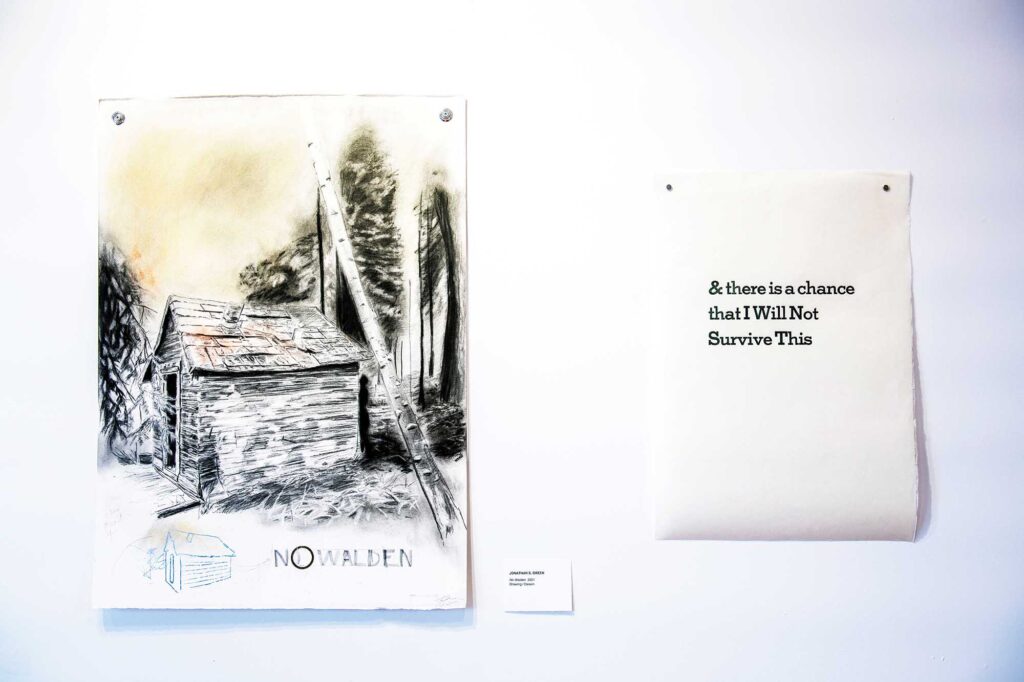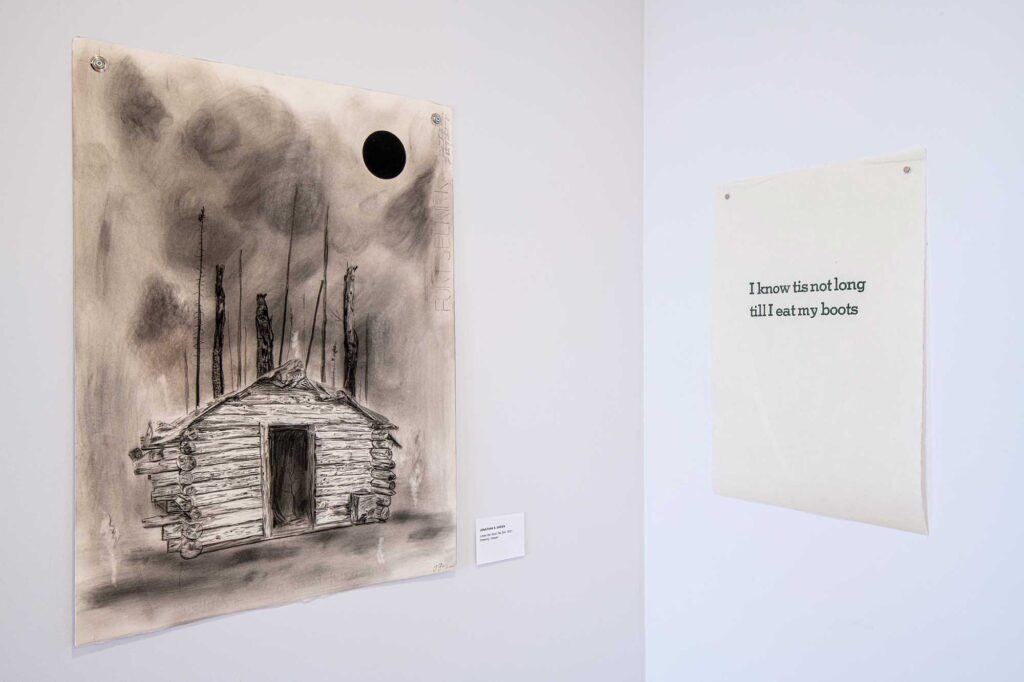Expanding on printmaking as both medium and process, Jonathan S. Green deploys a dazzling array of print techniques to undermine conventional notions of humans’ mastery of nature. Green’s work cultivates an uneasy and eerie view of landscape, where our historical colonial past must be reconciled with our contemporary desires to experience and control wilderness. Excerpts of text from Green’s own writing, Newfoundland writer Sara Tilley’s novel Duke, and the work of 19th century novelist Jack London punctuate imagery of man-made shelters and deteriorating deconstructed log cabins, many licked by flame. In a Biennale whose theme is inspired by the writing of philosopher, environmentalist and radical thinker Henry David Thoreau, the conceptual and critical foundation of Green’s work highlights the hypocrisy of settler notions of mastering nature. Thoreau’s self-cultivated image of rugged self-sufficiency is contradicted by the reality that he was squatting on borrowed land, in a house built with a borrowed axe, while his mother took care of his laundry.
Green gathered images of decaying and dilapidated structures during his Canadian Wilderness Artist Residency. His work in the 2021 Bonavista Biennale actively effaces colonial narratives of conquering and possessing nature, urging efforts toward living on this planet that are light and inherently temporary. Beyond providing speculative platforms for divining a new relationship to the natural world, Green’s prints carve out a future path in which the environment is understood as primary, and our existence within it as responsive. A sketchy blueprint that doesn’t ignore history—the failings, and misapprehensions that have propagated so much destruction—but instead reclaims and recasts what is of use from the past towards greater potential.
MH





